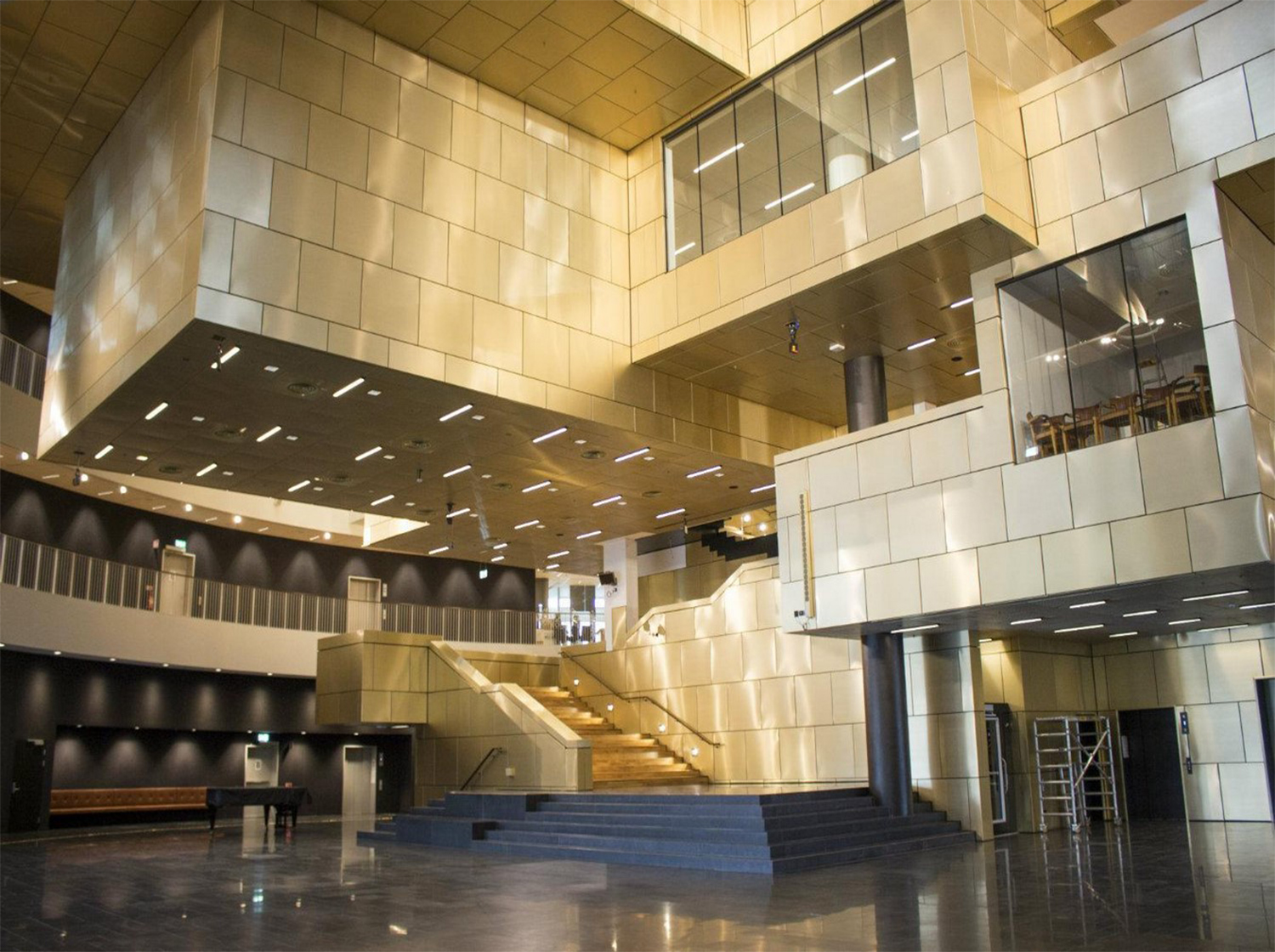Aluminum: The Architectural Alchemy - Transforming Urban Landscapes with Innovation, Sustainability, and Timeless Design
Author:Jayminton Time:2024-06-26
In the intersection of innovation and artistry, aluminum has emerged as a silent protagonist in modern architecture. Once relegated to kitchenware and beverage cans, this versatile metal now commands the spotlight in crafting some of the globe's most awe-inspiring structures. Its evolution from an industrial staple to a cornerstone of architectural brilliance underscores human ingenuity and the evolving synergy between form and function.
At first glance, aluminum's appeal lies in its sheer adaptability. Architects wield it like a sculptor's chisel, bending and shaping it into curves that defy conventional building materials. From the sinuous lines of Frank Gehry's Guggenheim Museum in Bilbao to the soaring arcs of Zaha Hadid's Heydar Aliyev Center in Baku, aluminum enables architects to translate their boldest visions into reality. Its lightweight nature belies its strength, allowing for daring cantilevers and intricate Facades that seem to defy gravity.

Yet, aluminum's allure goes beyond its physical properties. Its reflective surface catches the sunlight with an ethereal grace, transforming buildings into dynamic canvases that change with the passage of time and the angle of the sun. A building clad in aluminum becomes a living entity, shimmering and shifting as clouds drift by and shadows lengthen—a testament to the ever-changing interplay between light and architecture.
But aluminum is not merely a tool for aesthetic enhancement. Its practical advantages are equally compelling. Resistant to corrosion and weathering, aluminum withstands the harshest elements with minimal maintenance, ensuring longevity and durability. Its recyclability—infinitely recyclable, in fact—speaks to a commitment to sustainability that resonates deeply in an era increasingly defined by environmental stewardship. Buildings constructed with aluminum not only endure but also contribute to a greener future, where resource efficiency meets architectural excellence.
Consider the iconic examples around the globe where aluminum has left an indelible mark. The Petronas Towers in Kuala Lumpur stand as twin pillars of modernity, their gleaming aluminum and glass facades reflecting the ambition and dynamism of Malaysia's capital. In New York City, the shimmering spire of One World Trade Center pierces the skyline, its aluminum-clad pinnacle a symbol of resilience and renewal.
Indeed, the story of aluminum in architecture is a narrative of transformation and possibility. It embodies the spirit of innovation that propels humanity forward, pushing the boundaries of what is achievable in design and construction. As architects continue to harness aluminum's potential, they pave the way for a future where buildings not only shelter but inspire, where form and function converge in a dance of light and shadow.
In the end, aluminum stands not just as a building material but as an embodiment of architectural alchemy—a magical transformation of raw metal into soaring towers and sweeping structures that capture the imagination and redefine our urban landscapes. As we gaze upon the shimmering surfaces of modern marvels, we see not just buildings but dreams made tangible, forged from aluminum's promise of endless possibilities.

 S1 Clip-in Metal ceiling System
S1 Clip-in Metal ceiling System JMT-L4.2 U-Baffle System
JMT-L4.2 U-Baffle System JMT Aluminum Wall Cladding
JMT Aluminum Wall Cladding Aluminum Honeycomb Panel
Aluminum Honeycomb Panel Air-Condenser Cover
Air-Condenser Cover Metal Heat Cover
Metal Heat Cover Singapore Changi Airport T2 Arrival
Singapore Changi Airport T2 Arrival Australia Marvrl Stadium City Edge
Australia Marvrl Stadium City Edge Enterprise Information Announcement
Enterprise Information Announcement Construction Industry Solutions
Construction Industry Solutions About Jayminton
About Jayminton Contact US
Contact US